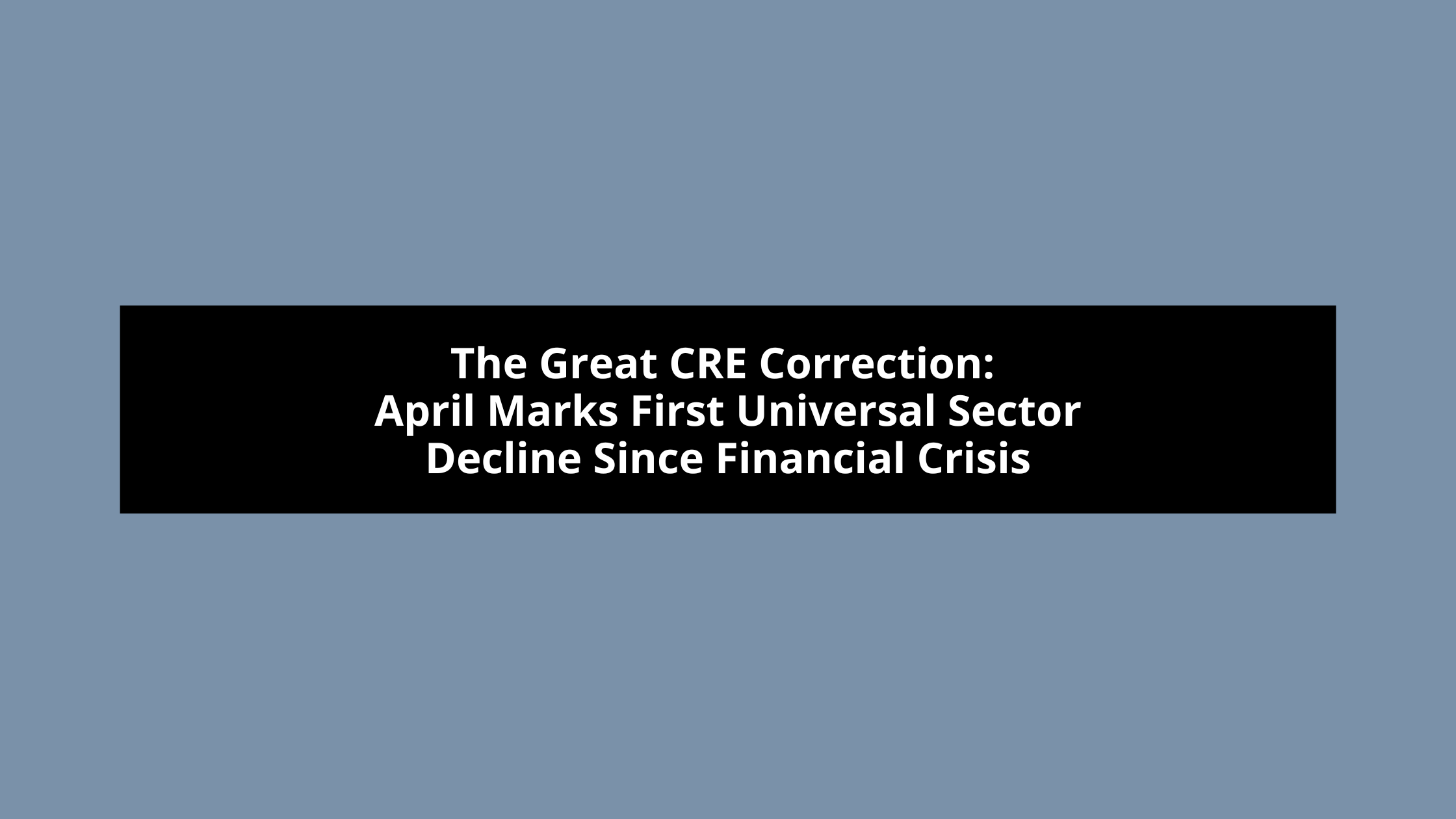CRE’s Impressive Sales Figures
After a challenging period in commercial real estate, 2025 is revealing significant green shoots across multiple sectors. February 2025’s impressive sales figures and renewed M&A activity signal a market potentially entering a new phase of selective recovery, with investors showing increased confidence in specific property types and strategic acquisitions.
Transaction Volume Surges Across Property Types
- February 2025 marked a significant turning point for commercial real estate, with total sales volume jumping 30% year-over-year to reach $24.4 billion. This broad-based recovery touched nearly every asset class, suggesting improving investor sentiment and a narrowing bid-ask spread between buyers and sellers.
- The retail sector led this resurgence with an extraordinary 105% increase in transaction volume, totaling $7.1 billion. This dramatic rise demonstrates renewed faith in brick-and-mortar retail assets, particularly grocery-anchored properties that continue to show resilience in the evolving consumer landscape.
- Office properties, which have faced significant headwinds in recent years, showed remarkable improvement with a 55% increase in sales volume, reaching $3.5 billion. Even more encouraging was the 217% spike in central business district (CBD) transactions, indicating investors are returning to core urban markets after years of uncertainty about the future of downtown office spaces.
- Multifamily continues its consistent performance, recording its ninth consecutive month of year-over-year growth with $7.5 billion in transactions—a 7% increase from February 2024. The sector’s stability makes it a cornerstone of investment portfolios for institutions seeking reliable income streams.
- Industrial property sales held steady at $5 billion, maintaining the sector’s reputation for stability even as pricing grew by 5%. This resilience reflects the continued demand for logistics and distribution facilities in our e-commerce-driven economy.
- Even hospitality, which has faced some of the most significant challenges since the pandemic, showed positive movement with a 20% year-over-year increase in sales volume to $1.3 billion, though pricing adjustments continue in this sector.
Strategic M&A Activity Signals Market Confidence
The reawakening of entity-level transactions after nearly four years of limited activity represents another significant positive indicator for commercial real estate. Major private equity firms are leading this charge, deploying substantial capital to acquire REITs and investment managers.
- Blackstone’s completion of its $4 billion acquisition of Retail Opportunity Investments Corp., which owns more than 90 grocery-anchored assets on the West Coast, highlights the premium being placed on resilient retail properties with strong anchor tenants. Similarly, Apollo’s agreement to buy Bridge Investment Group Holdings in a deal valued at approximately $1.5 billion demonstrates confidence in alternative commercial real estate investment strategies across industrial, renewable energy, and other diversified assets.
- Barings’ acquisition of Artemis Real Estate Partners further illustrates the trend of consolidation among investment managers, creating entities with greater scale and diversified investment capabilities across the commercial property spectrum.
These strategic moves are facilitated by improving debt markets, with tightening spreads and increased availability of financing. Additionally, the investment pool has expanded beyond traditional sources to include insurance companies, retail investment channels, sovereign wealth funds, pension funds, and other institutional investors funneling capital into private M&A suitors.
Catalysts for Continued Growth
Several factors are driving this renewed activity in commercial real estate:
- Interest Rate Stabilization: Investors are adapting to the “higher-for-longer” interest rate environment, leading to more realistic asset pricing and transaction expectations.
- Capital Availability: Private equity firms and institutional investors have amassed significant dry powder that needs deployment, creating pressure to find attractive investment opportunities.
- Value Opportunities: Public companies with market capitalizations around $5 billion or less that have shown uninspiring shareholder returns are becoming attractive acquisition targets.
- Scale Benefits: Consolidation allows companies to achieve greater operational efficiencies, enhanced market presence, and improved access to capital markets.
Looking Ahead: Selective Recovery
While February 2025’s surge suggests improving conditions across commercial real estate, the recovery appears selective rather than universal. Pricing volatility continues in certain sectors, with hospitality experiencing a 9% price decline and office values dropping 3%, even as retail and industrial both posted 5% price growth.
This mixed pricing picture, combined with the strength in transaction volume, indicates the market is recalibrating rather than experiencing a straightforward rebound. Investors are becoming more discerning, focusing on quality assets in resilient sectors while remaining cautious about properties facing structural challenges.
As 2025 progresses, we can expect continued momentum in transaction activity, particularly in retail, multifamily, and selectively in office properties showing strong fundamentals. M&A activity will likely build as buyers target undervalued public companies and private capital continues its search for scale and diversification.
Good news. The commercial real estate market appears to be entering a new phase—one characterized by strategic investment rather than broad-based speculation. For investors able to identify quality assets in resilient sectors, the green shoots visible today may well develop into sustainable growth opportunities in the months ahead.
About MylesTitle Founder, Owner & Chief Title Insurance Officer:
Myles Lichtenberg, Esq., is a recognized leader in the real estate title insurance industry. Since 1979, Mr. Lichtenberg, and his amazing team, have conducted well over 27,000+ real estate title transactions and over $16 Billion Dollars of settled transactions, involving just about every type and variety of real estate configuration – from commercial to residential, from complex to simple and from single-state to multi-state portfolios.


